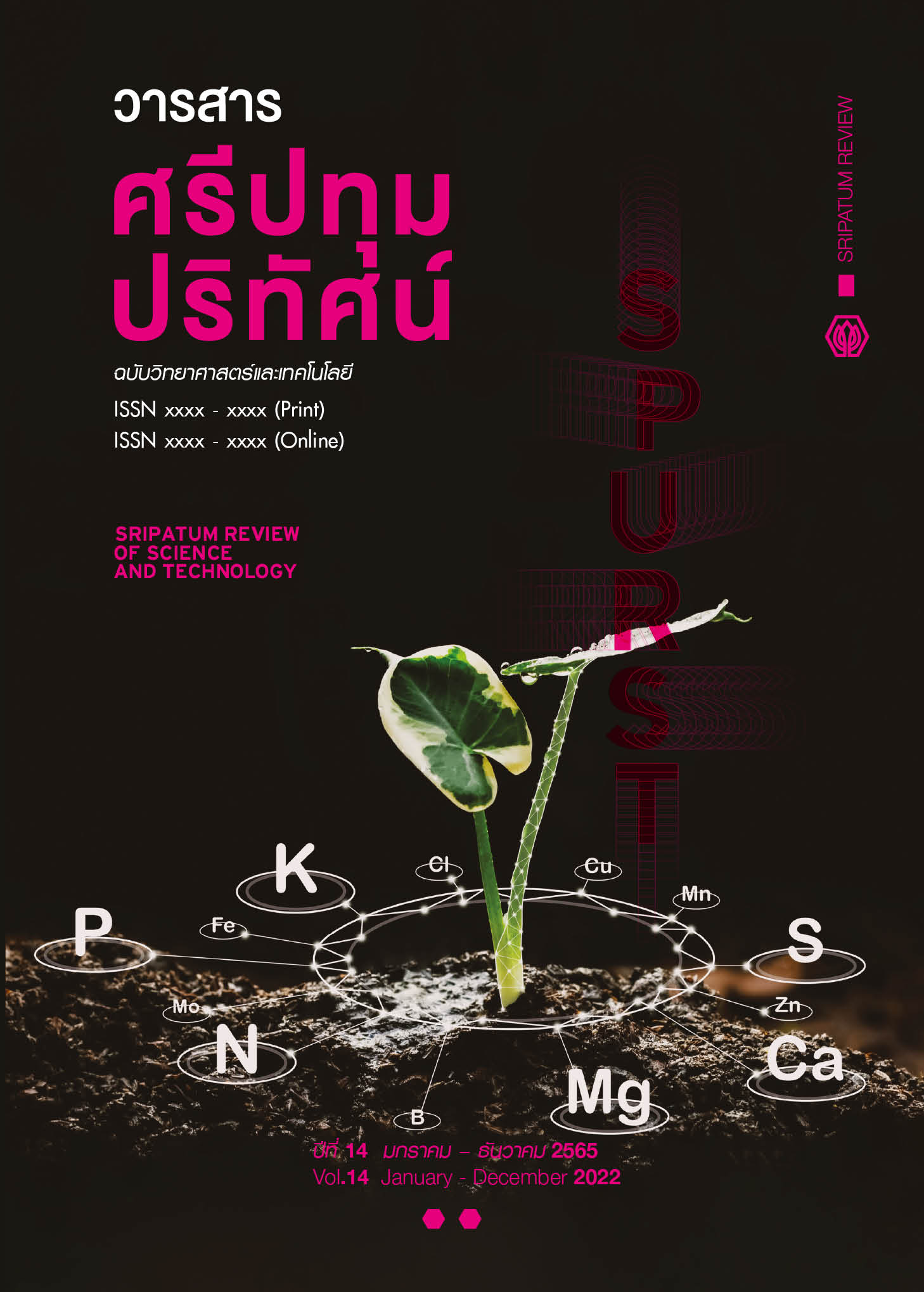Effects of temperature and pressure to fiber orientation and color intensity of plastic part by using Taguchi method
Main Article Content
Abstract
Plastic injection parts with fiber reinforce always use for applications of high-strength injection parts and sometimes for replacement of metal parts. However, part surface problems were concerned due to limitations of material property, fiber orientation in plastic parts, and improper injection conditions. This research aimed to study the process parameters that affected fiber orientation and color intensity of plastic parts. Taguchi method was applied for the design of experiment (DOE) to analyze the results of average fiber length and color intensity for the injection part. The main parameters which were melt temperature, mold temperature, and injection pressure were investigated as injection condition settings in DOE. Plastic flow analysis software was used for the investigation of average fiber length and colorimeter equipment was used for color intensity indicating. From the results, the parameters that affected highly to average fiber length and color intensity were injection pressure and mold temperature respectively. The average fiber length and color intensity results after improvement with the Taguchi method were 75.62 % and 23.12 respectively.
Article Details
References
Antoine, D., Jean-Jacques, P., Paulo, F. and Gilles, R. (2020). Fiber Orientation and Concentration in an Injection-Molded Ethylene-Propylene Copolymer Reinforced by Hemp. Polymers, 12(12), 1-20.
Chacinski, T. and Sutowski, P. (2021). Common Defects in Injection Molding of Plastic Products and Their Influence on Product Quality. Journal of Mechanical and Energy Engineering, 5(45), 7-14.
Foss, P. H., Tseng, H. C., Snawerdt, J., Chang, Y., Yang, W. H. and Hsu, C. H. (2014). Prediction of Fiber Orientation Distribution in Injection Molded Parts Using Moldex3D Simulation. Polymer Composites, 35(4), 671-680.
Gim, J., Han, E., Rhee, B., Friesenbichler, W. and Gruber, D. P. (2020). Causes of the Gloss Transition Defect on High-Gloss Injection-Molded Surfaces. Polymers, 12(9), 2100.
Huang, C. T., Chen, X. W. and Fu, W. W. (2020). Investigation on the Fiber Orientation Distributions and Their Influence on the Mechanical Property of the Co-Injection Molding Products. Polymers, 12(1), 1-19
Huang, C. T., Chu, J. H., Fu, W. W., Hsu, C. and Hwang, S. J. (2021). Flow induced Orientations of Fibers and Their Influences on Warpage and Mechanical Property in Injection Fiber Reinforced Plastic (FRP) Parts. International Journal of Precision Engineering and Manufacturing-Green Technology, 8(3), 917-934.
Karagoz, I. and Tuna, O. (2021). Effect of melt temperature on product properties of injection-molded high-density polyethylene. Polymer Bulletin, 78, 6073-6091.
Kausar, A. (2019). Advances in carbon fiber reinforced polyamide-based composite materials. Advances in materials science, Vol. 19, 4(62), 67-82.
Li, K., Yan, S. L., Pan, W. F. and Zhao, G. (2017). Optimization of fiber-orientation distribution in fiber-reinforced composite injection molding by Taguchi, back propagation neural network, and genetic algorithm–particle swarm optimization. Advances in Mechanical Engineering, 9(9), 1-11.
Li, X., Gong, N., Gao, Z. and Yang, C. (2017). Fiber orientation in melt confluent process for reinforced injection molded part. The International Journal of Advanced Manufacturing Technology, 90, 1457-1463.
Mbarek, S., Baccouch, Z., Eterradossi, O., Perrin, D., Monasse, B., Garay, H. and et al. (2019). Effect of Recycling and Injection Parameters on Gloss Properties of Smooth Colored Polypropylene Parts: Contribution of Surface and Skin Layer. Polymer engineering and science, 59(6), 1288-1299.
Roo, T. V., Kolling, S., Dillenberger, F. B. and Amberg, J. (2022). On short glass fiber reinforced thermoplastics with high fiber orientation and the influence of surface roughness on mechanical parameters. Journal of Reinforced Plastics and Composites, 41(7-8), 296-308.
Tanaka, K., Kitano, T. and Egami, N. (2014). Effect of fiber orientation on fatigue crack propagation in short-fiber reinforced plastics. Engineering Fracture Mechanics, 123, 44-58.
Wang, G., Zhao, G. and Wang, X. (2013). Effects of cavity surface temperature on reinforced plastic part surface appearance in rapid heat cycle moulding. Materials and Design, 44, 509–520.


